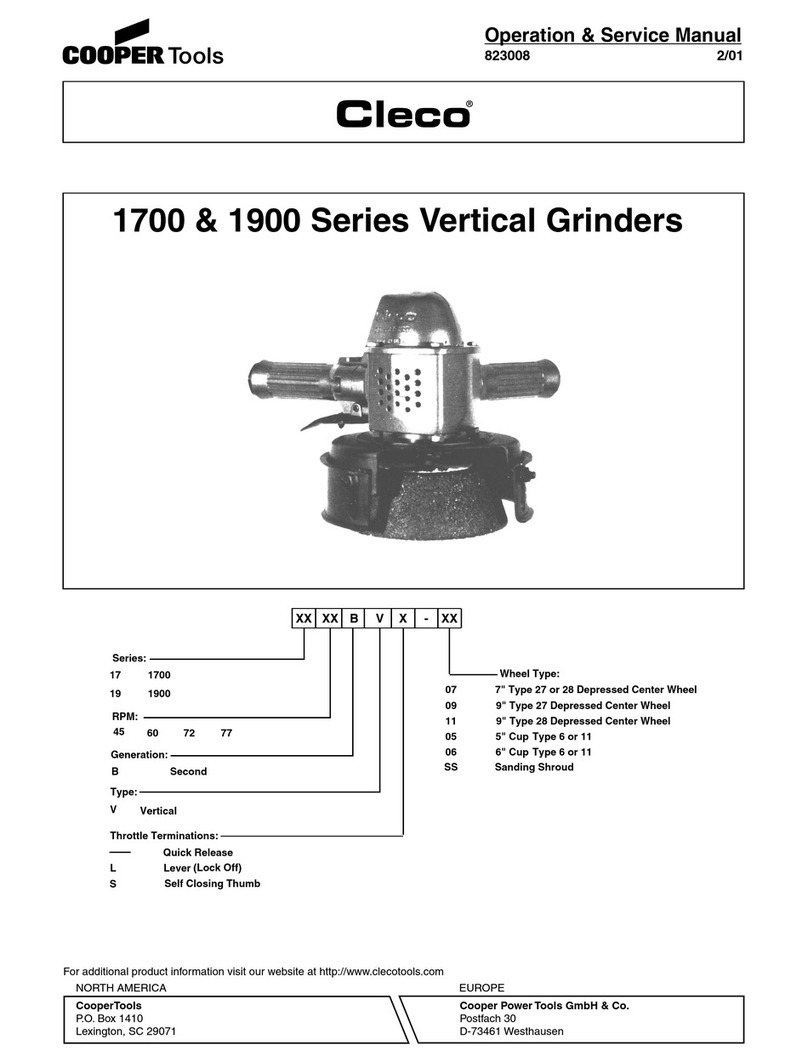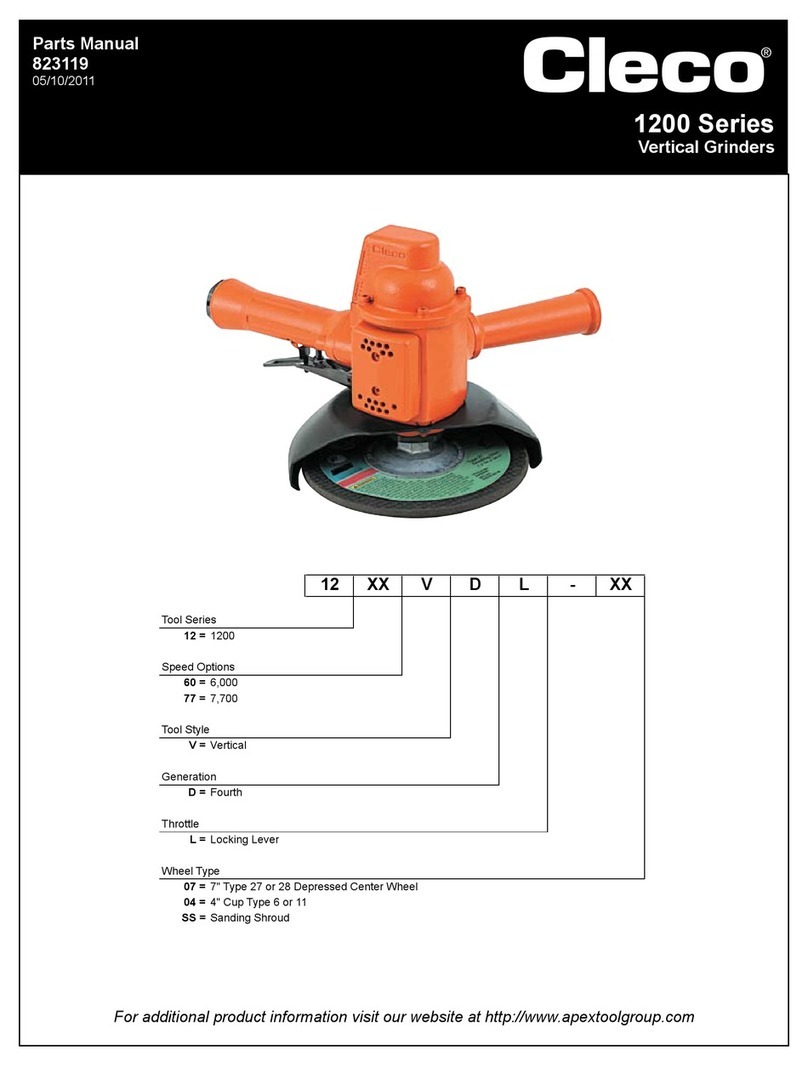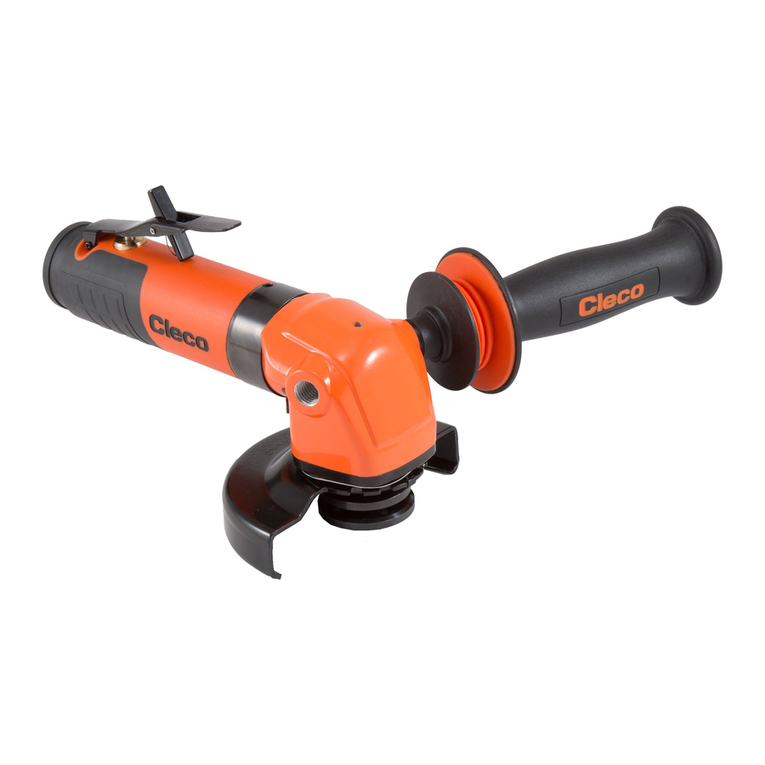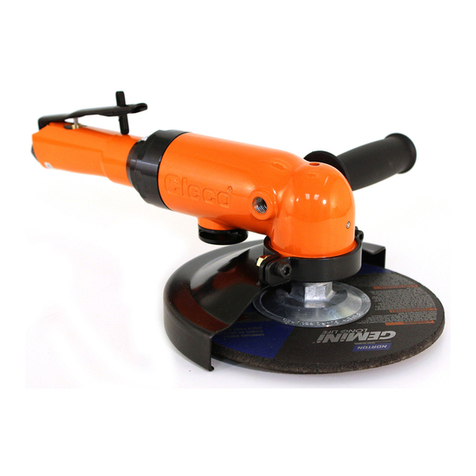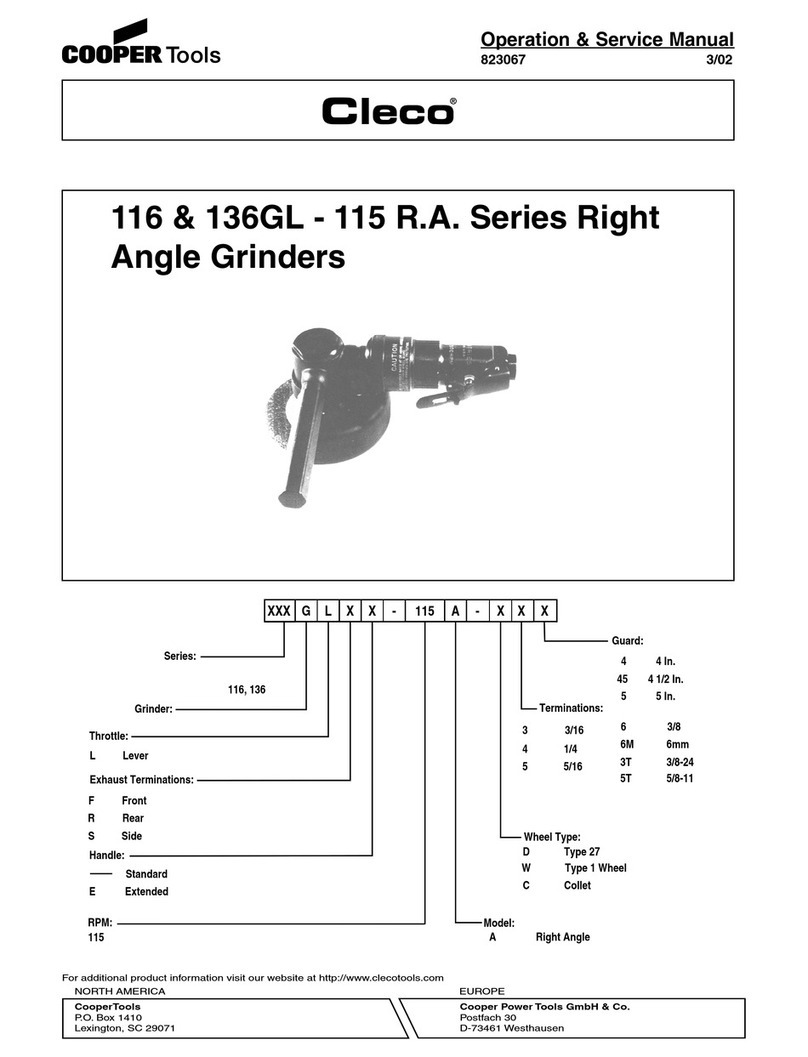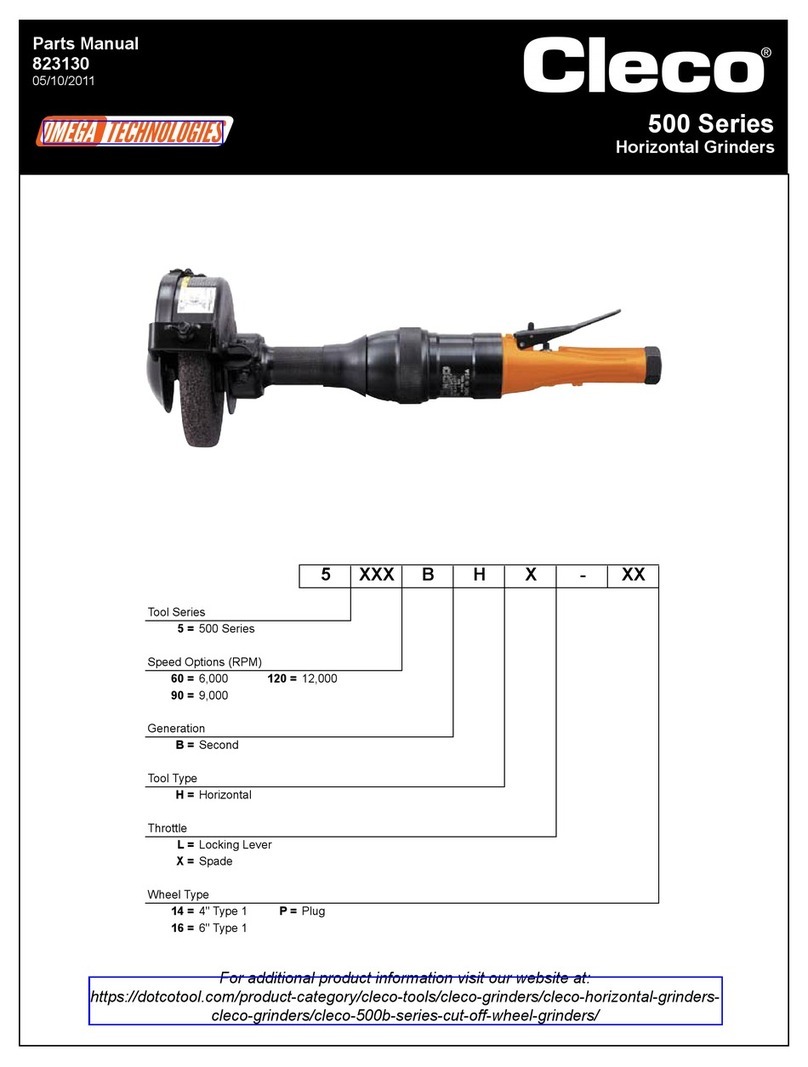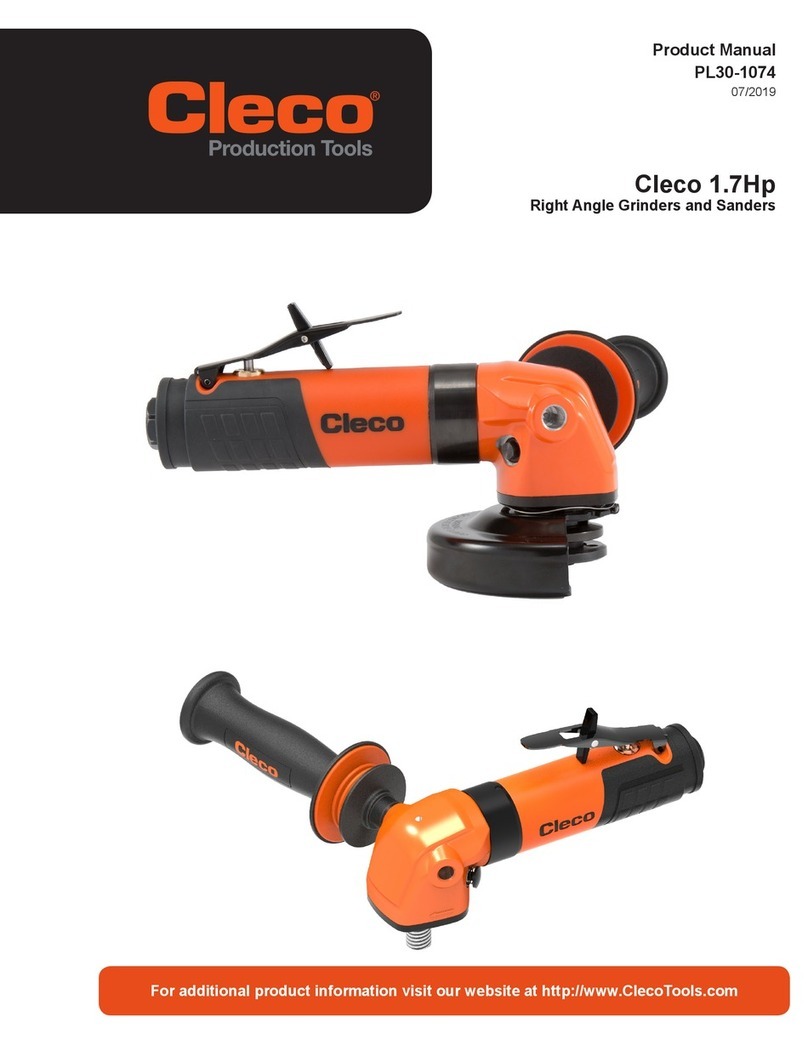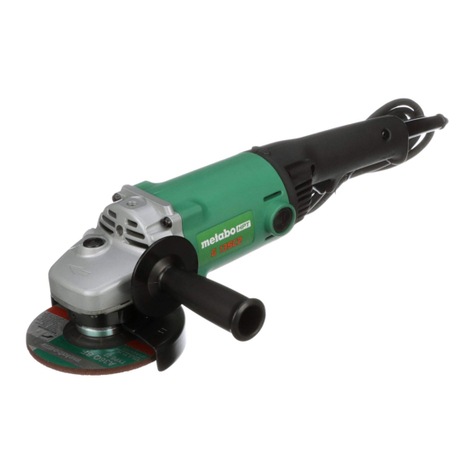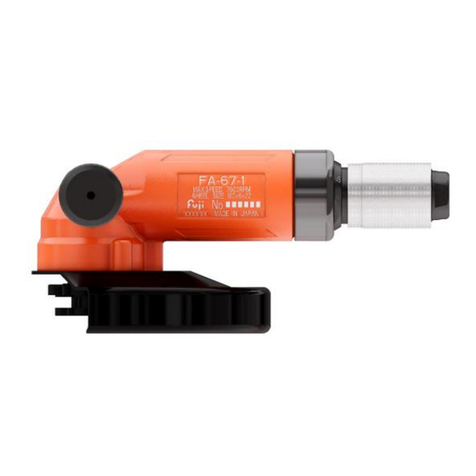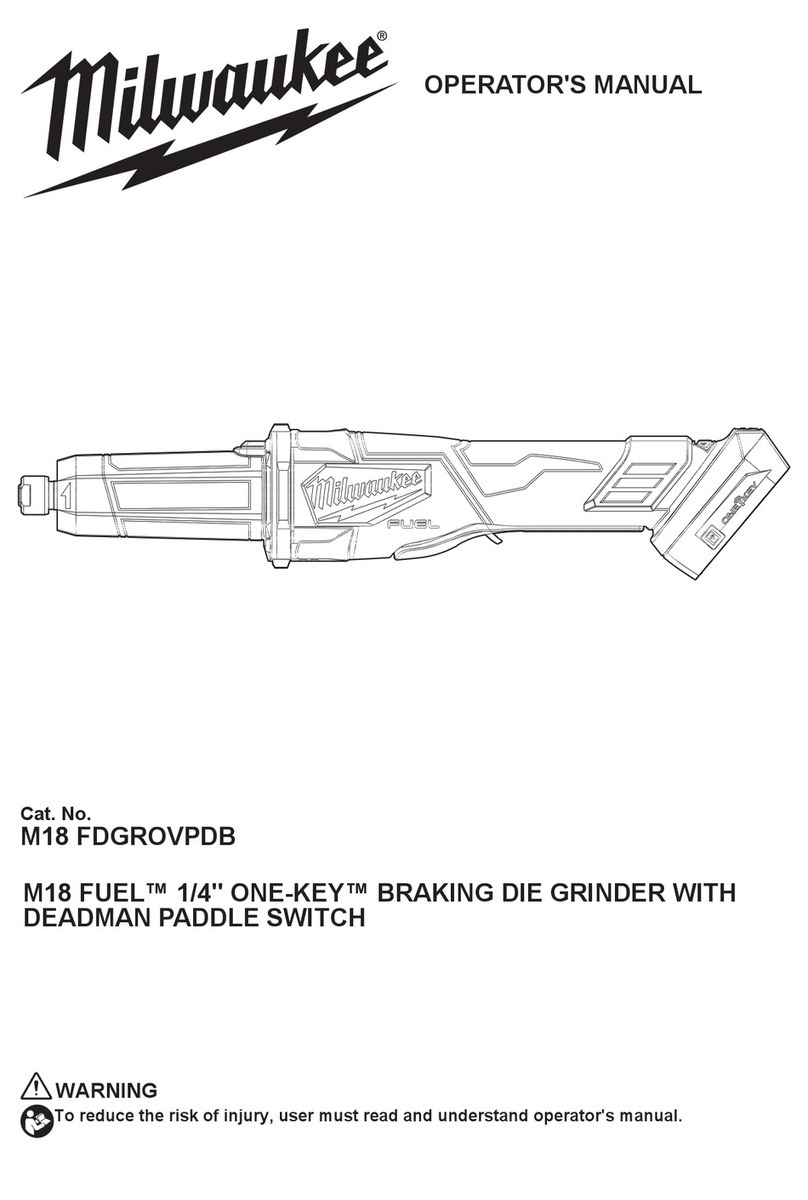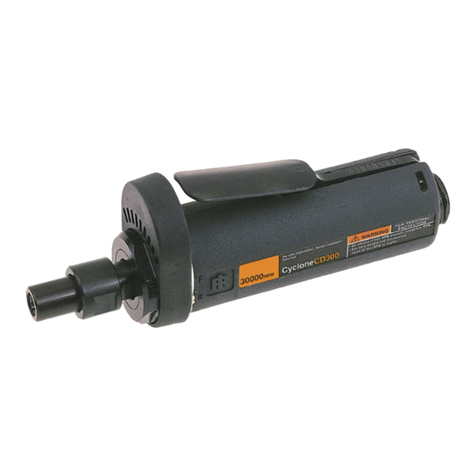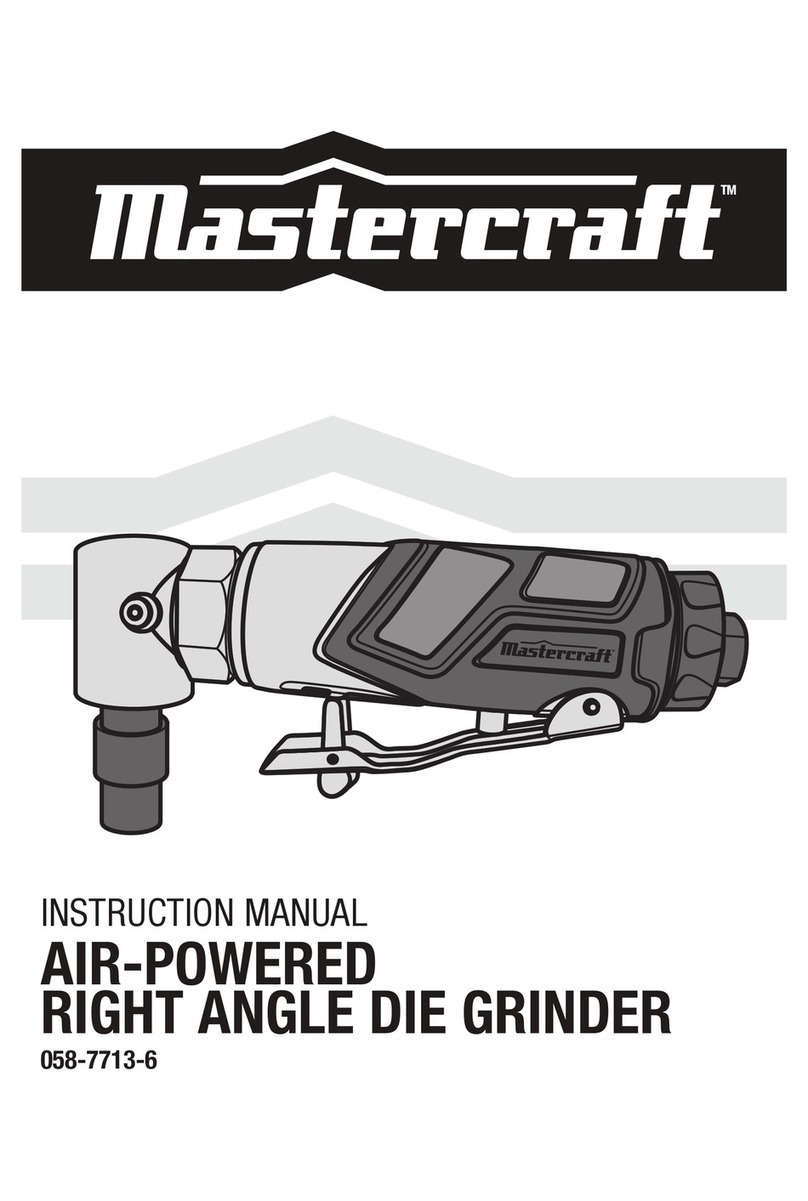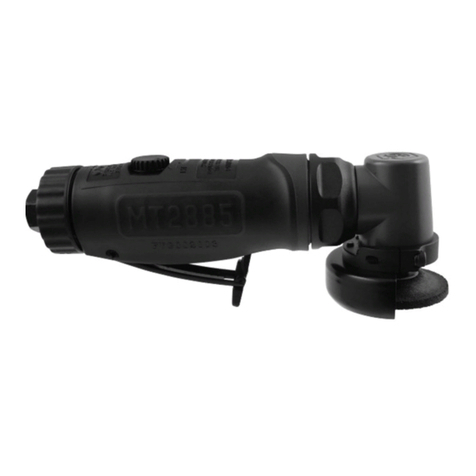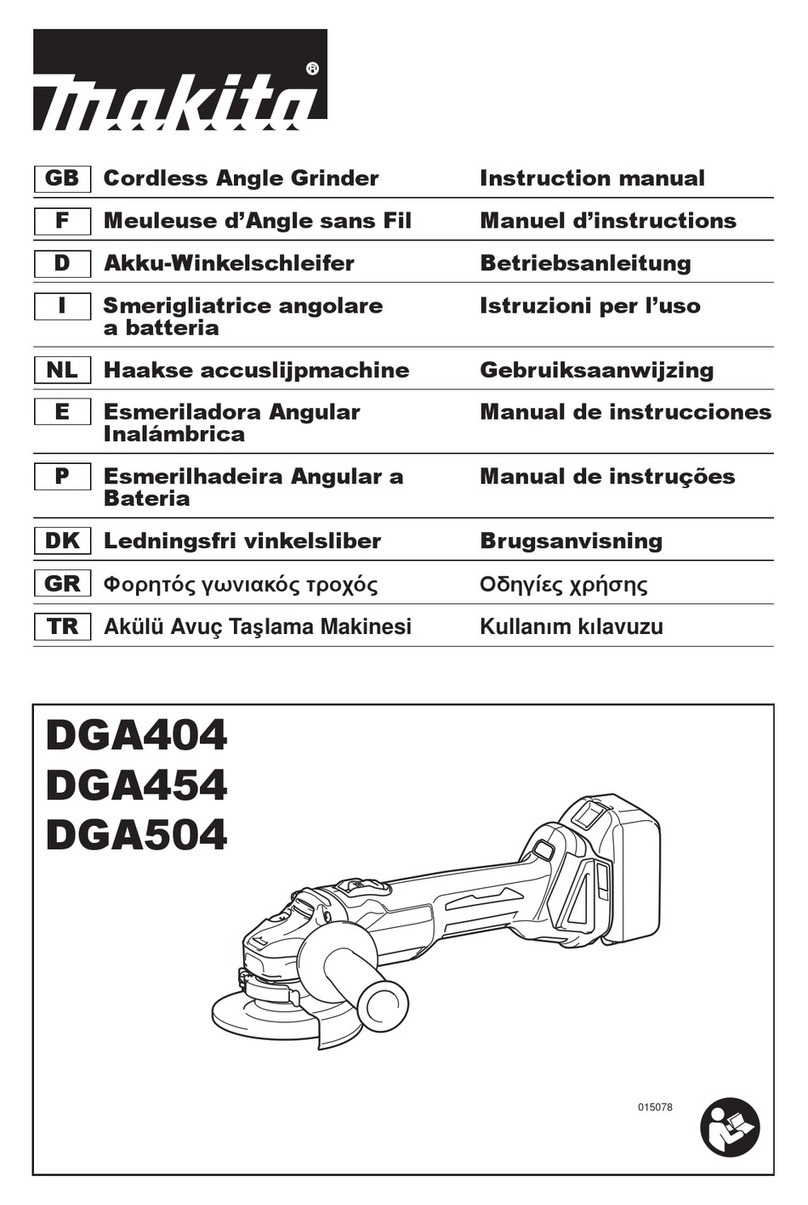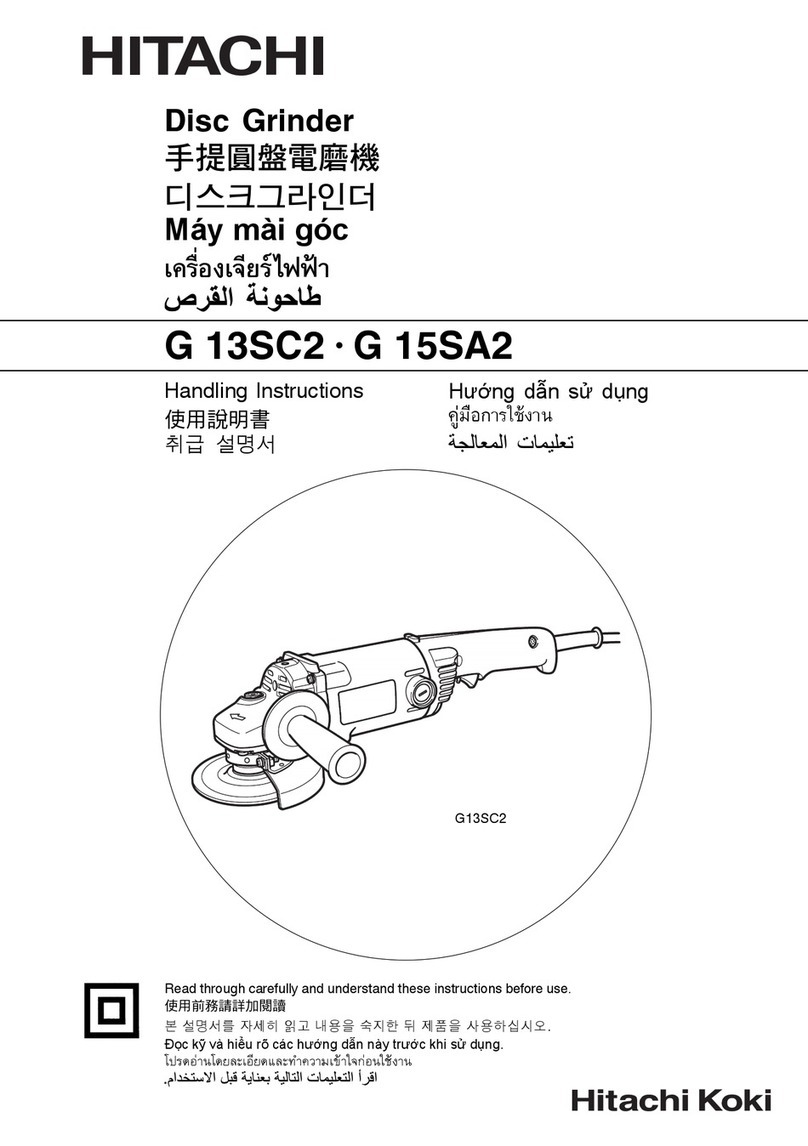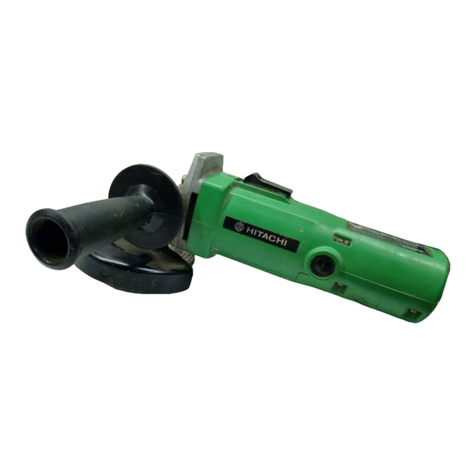
4
Safety Recommendations
exposure to cold and dampness, diet, smoking and work practices
are thought to contribute to the conditions.
Tool operators should be aware of the following warning signs and
symptoms so that a problem can be addressed before it becomes
a debilitating injury. Any user suffering prolonged symptoms of
tingling, numbness, blanching of fingers, clumsiness or weakened
grip, nocturnal pain in the hand, or any other disorder of the
shoulders, arms, wrists, or fingers is advised to consult a physi-
cian. If it is determined that the symptoms are job related or
aggravated by movements and postures dictated by the job
design, it may be necessary for the employer to take steps to
prevent further occurrences. These steps might include, but are
not limited to, repositioning the workpiece or redesigning the
workstation, reassigning workers to other jobs, rotating jobs,
changing work pace, and/or changing the type of tool used so as
to minimize stress on the operator. Some tasks may require more
than one type of tool to obtain the optimum operator/tool/task
relationship.
The proper selection of the correct type of grinder is an important
ergonomic consideration. Each application should be carefully
considered and the tool chosen that will minimize the stresses on
the operator that can lead to the onset of cumulative trauma
disorders. Some tasks require more than one type of tool to obtain
the optimum operator/tool/task relationship. Cleco offers a com-
plete selection of tools including vertical, straight, angle, and
extended grinders that make possible the correct ergonomic
match of the operator, tool, and task.
The following suggestions will help reduce or moderate the effects
of repetitive work motions and/or extended vibration exposure:
•Use a minimum hand grip force consistent with proper
control and safe operation
•Keep body and hands warm and dry (cold weather is
reported to be a major factor contributing to Raynaud's
Syndrome)
•Avoid anything that inhibits blood circulation
—Smoking Tobacco (another contributing factor)
—Cold Temperatures
—Certain Drugs
•Tasks should be performed in such a manner that the
wrists are maintained in a neutral position, which is not
flexed, hyperextended, or turned side to side
•Stressful postures should be avoided —select a tool
appropriate for the job and work location
•Avoid highly repetitive movements of hands and wrists,
and continuous vibration exposure (after each period of
operation, exercise to increase blood circulation)
•Use quality abrasive wheels (the primary source of vi-
bration when using a grinder is a wheel that is out of
balance, out of round, untrue, or possibly any combina-
tion of all three)
•Keep tool well maintained and replace worn parts (a
preventive maintanance program with scheduled inspec-
tions is highly recommended)
Work gloves with vibration reducing liners and wrist supports are
available from some manufacturers of industrial work gloves. Tool
wraps and grips are also available from a number of different
manufacturers. These gloves, wraps, and wrist supports are
designed to reduce and moderate the effects of extended vibra-
tion exposure and repetitive wrist trauma. Since they vary widely
in design, material, thickness, vibration reduction, and wrist sup-
port qualities, it is recommended that the glove, tool wrap, or wrist
support manufacturer be consulted for items designed for your
specific application. WARNING! Proper fit of gloves is impor-
tant. Improperly fitted gloves may restrict blood flow to the
fingers and can substantially reduce grip strength.
USE QUALITY ABRASIVE WHEELS
The primary source of vibration when using a portable grinder is
an abrasive wheel that is out of balance, out of round, untrue, or
possibly any combination of all three.
The use of quality abrasive wheels which are well balanced,
round, and true is highly recommended as they have been found
to significantly reduce vibration. Some abrasive wheels lose their
balance, roundness, and trueness as they wear from use. Be-
cause of the abusive nature of the vibration caused by out of
balance, out of round, and untrue condition of some abrasive
wheels, it is felt that these wheels are more suseptible to failure.
Excessive vibration may signal eminent wheel failure. Out of
balance abrasive wheels are dangerous. Flat spotting of the
abrasive wheel, caused by grinding the wheel to a stop after the
power has been shut off can result in changes to the balance and
shape of the wheel. Be sure the grinding wheel has stopped before
setting the tool down. Set the tool in a tool rest or tool holder when
not in use.
WIRE BRUSHES
If a grinder is used for wire brushing applications the same
problems of balance, roundness, and trueness as experienced
with abrasive wheels prevail. Use quality wire brushes.
USE A PREVENTIVE MAINTENANCE PROGRAM
Tool abuse or poor maintenance procedures can amplify and
contribute to the vibration produced by the abrasive wheel. A
preventive maintenance program featuring scheduled periodic
inspections and proper maintenance is the best way to assure
safety in your portable grinding operations. A well managed
program can, for example, detect such things as speed variations
due to wear, flanges or spindles that have been damaged from
abuse, or bad bearings damaged by foreign matter or lack of
lubrication. Problems such as these can affect the wheel trueness
Extension Neutral Flexion Radial Deviation Neutral Ulnar Deviation
Avoid Avoid Avoid
OK Avoid OK












